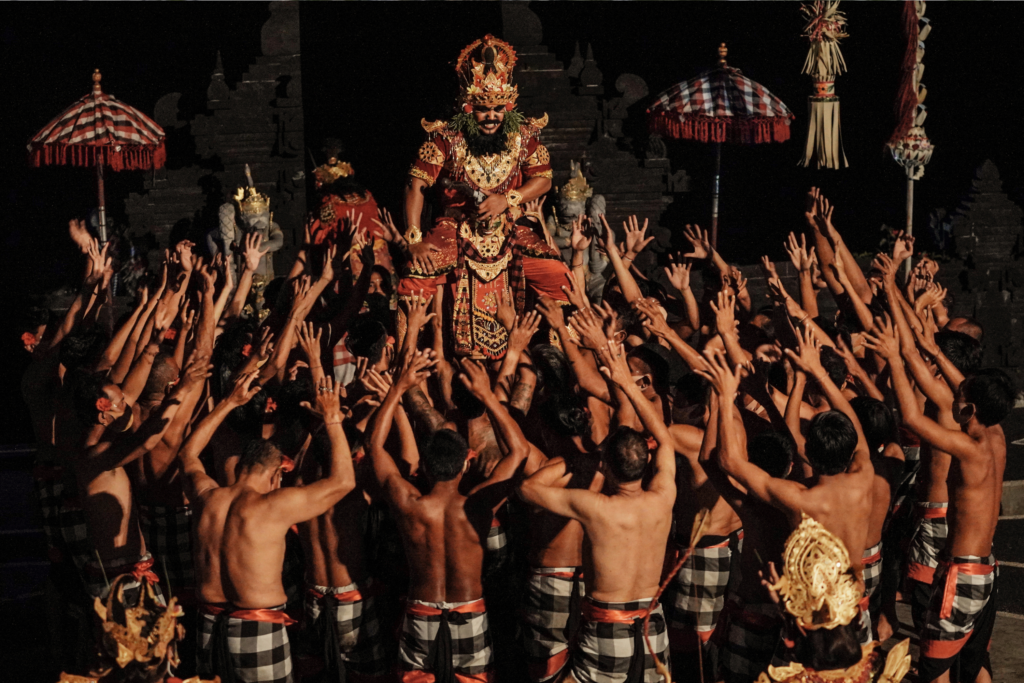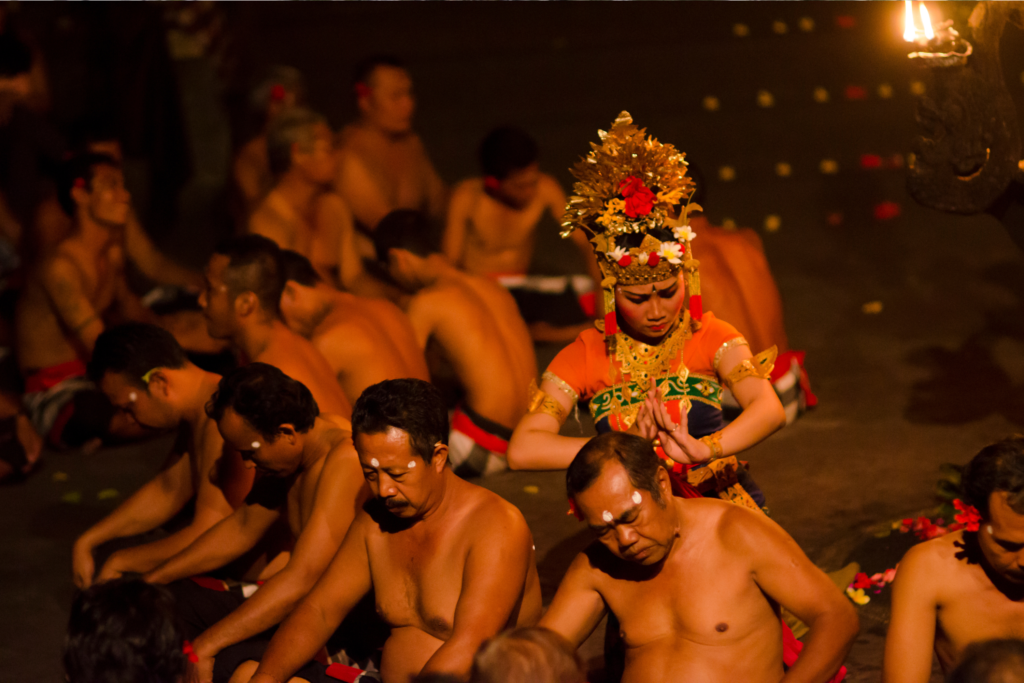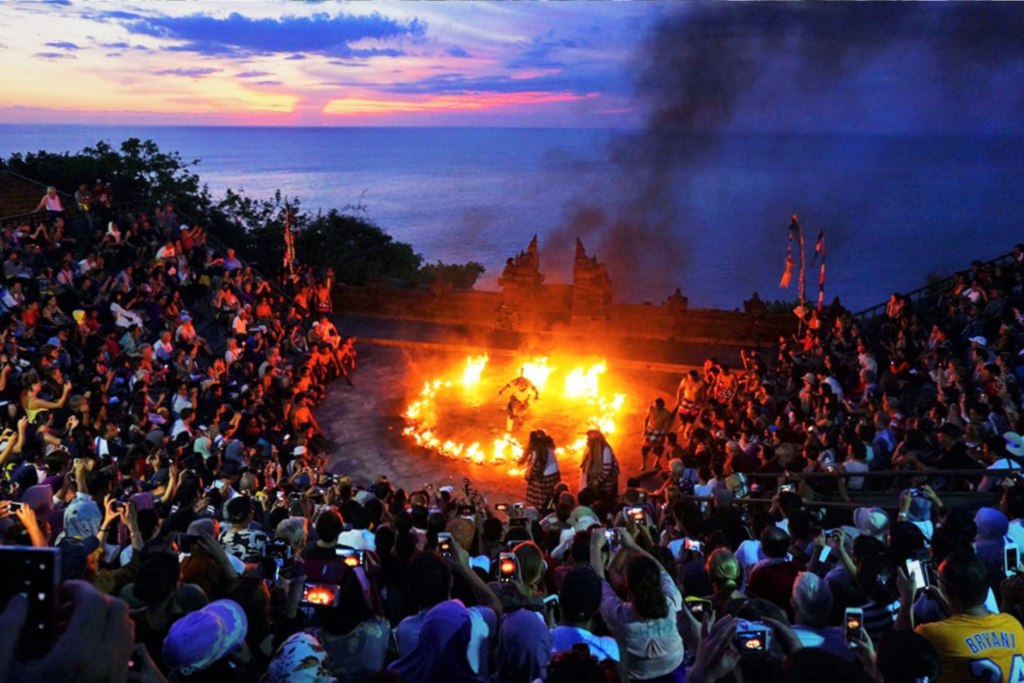
Bali, known for its vibrant culture and rich traditions, offers a unique blend of art and spirituality. Among its many cultural gems, the Kecak Dance stands out as one of the most fascinating and iconic performances on the island. Whether you’re planning a trip to Bali or simply intrigued by its cultural heritage, let’s dive into the enchanting world of the Kecak Dance.
What is the Kecak Dance?
The Kecak Dance, also known as the “Monkey Chant Dance,” is a traditional Balinese performance that combines dance, music, and drama. Unlike other Balinese dances accompanied by gamelan instruments, the Kecak Dance relies solely on the human voice, creating an unforgettable rhythmic chant known as “cak-cak-cak.”
This hypnotic performance is based on the Hindu epic Ramayana, telling the story of Prince Rama, his wife Sita, and the monkey god Hanuman as they battle the demon king Ravana.

History and Origins of the Kecak Dance
The Kecak Dance originated in the 1930s, pioneered by Balinese artist Wayan Limbak in collaboration with German painter and musician Walter Spies. They aimed to create a dance that showcased Bali’s cultural richness while appealing to international audiences.
Inspired by the sacred trance rituals of Balinese Hinduism, Kecak evolved into a dramatic storytelling dance that gained global recognition. Today, it remains one of the most sought-after cultural experiences in Bali.
What Makes the Kecak Dance Unique?
Several elements make the Kecak Dance a truly mesmerizing experience:
- Chorus of Chanting Men: Instead of musical instruments, a large group of men form a circle and repeatedly chant “cak-cak-cak” in perfect harmony.
- Dramatic Fire Effects: Many performances incorporate fire into the dance, adding a dramatic visual spectacle.
- Traditional Costumes: Dancers wear elaborate traditional costumes representing characters from the Ramayana epic.
- Trance-like Movements: The rhythm and repetition often lead to a trance-like state among the performers, reflecting Bali’s deep spiritual roots.

Where to Watch the Kecak Dance in Bali
If you’re visiting Bali, watching a Kecak Dance is an absolute must! Here are some of the best venues to experience this iconic performance:
1. Uluwatu Temple
One of the most famous locations, the Uluwatu Temple Kecak Dance takes place on a dramatic cliffside, offering breathtaking sunset views.
Performance Schedule: Daily at 6:00 PM
Why Visit: Stunning ocean backdrop, historical temple setting
2. Tanah Lot Temple
Experience the Kecak Dance with the picturesque Tanah Lot Temple in the background, providing a serene coastal atmosphere.
Performance Schedule: Regular evening shows
Why Visit: Iconic sea temple, sunset performances
3. GWK Cultural Park
Garuda Wisnu Kencana (GWK) Cultural Park offers daily Kecak Dance performances in an open-air amphitheater.
Performance Schedule: Various showtimes throughout the day
Why Visit: Convenient location, cultural exhibitions
4. Batubulan Village
A cultural hotspot, Batubulan Village is known for its authentic Kecak performances, providing a more intimate setting.
Performance Schedule: Twice daily shows
Why Visit: Traditional village atmosphere, skilled performers
Tips for Enjoying the Kecak Dance
To make the most of your Kecak Dance experience, here are some useful tips:
- Arrive Early: Popular venues fill up quickly, especially during peak tourist seasons.
- Wear Comfortable Clothing: Outdoor venues can be warm, so dress appropriately.
- Capture the Moment: Photography is allowed in most locations, but remember to be respectful.
- Understand the Story: Familiarize yourself with the Ramayana epic to fully appreciate the performance.
The Kecak Dance is more than just a performance—it’s a captivating blend of history, spirituality, and artistic expression. Whether you’re drawn by the rhythmic chants, the cultural storytelling, or the dramatic fire-lit scenes, the Kecak Dance offers an experience you’ll never forget.
Have you witnessed the Kecak Dance before? Share your experience in the comments below!

